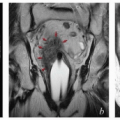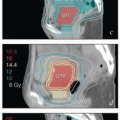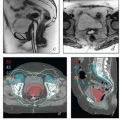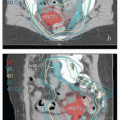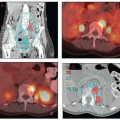The surgeon. In North America, gynecologic oncologists are board-certified specialists who have 3 to 4 years of postresidency training specific to the surgical and chemotherapeutic management of gynecologic cancers. Gynecologic oncologists are typically at the hub of gynecologic cancer patient care and generally have close access to other subspecialists, including
dedicated gynecologic pathologists and diagnostic imagers. For this reason, biopsies and imaging studies obtained by a gynecologic oncologist are more likely to yield high-quality cancer-specific information than are studies obtained by a family physician or general gynecologist. Also, several studies have demonstrated that patients whose initial surgery is performed by a gynecologic oncologist are less likely to have inappropriate or failed procedures and tend to have better outcomes than patients whose initial surgery is performed by a nonspecialized surgeon.6,7
The radiation oncologist. Because fewer than 10% of new radiation oncology patients have gynecologic cancers, very few radiation oncologists can dedicate all or even most of their practice to the management of these cancers. There may be some point below which the number of gynecologic cases seen by a radiation oncologist is too small to provide an adequate base of experience, particularly experience with the more uncommon cancers and specialized techniques. When the frequency of gynecologic cases is low, radiation oncologists may also find it difficult to build relationships with other members of the multidisciplinary team. For this reason, it is recommended that radiation oncology practices identify one or two individuals who can commit significant effort to this subspecialty area. Whenever possible, complex cases should be referred to large centers with radiation oncologists who subspecialize in gynecologic cancer and are well integrated into multidisciplinary gynecologic oncology care teams.
The chemotherapy provider. Depending on the practice setting, chemotherapy may be prescribed and managed by a gynecologic oncologist or by a medical oncologist. Because gynecologic cancers are uncommon and because many patients with such cancers have chemotherapy given by a gynecologic oncologist, medical oncology practices may treat only very small numbers of gynecologic cancers. When chemotherapy is given by a medical oncologist, close collaboration between the radiation oncologist, gynecologic oncologist, and medical oncologist is particularly important to achieve appropriate coordination of combined-modality regimens.
The pathologist. The importance of expert pathology review of cancer specimens cannot be overemphasized. Critical prognostic information about surgical margin status, sites of lymph node involvement, and other tumor features can easily be lost if surgical specimens are handled incorrectly. Misdiagnosis and under- and overdiagnosis of histologic risk factors by inexpert pathologists have undoubtedly caused clinicians to give inappropriate treatments and to fail to give necessary treatments to patients with gynecologic cancers (Chapter 2).8
The diagnostic imager. Multidisciplinary decision making and radiation oncology practice are heavily dependent on accurate and complete diagnostic imaging interpretation. The use of optimized techniques can markedly improve the utility of gynecologic diagnostic imaging modalities (Chapter 4). Specialized understanding of the behaviors of gynecologic cancers and their treatment typically leads to diagnostic reports that are more accurate and informative.
The primary care provider. The importance of the primary care provider’s specialized expertise—namely, his or her knowledge of the patient and the patient’s precancer health care history—should not be underestimated. Communication between oncology and primary care providers is essential to provide continuity throughout the phases of cancer treatment and follow-up, to identify and manage comorbid conditions that may affect cancer treatment, and to coordinate supportive care.9
Nurses. Nurses play a vital role in patient care and communication within the multidisciplinary team. Radiation oncology nursing is becoming a well-recognized nursing subspecialty. Gynecologic radiation oncology nursing requires special skills, particularly related to the nursing of brachytherapy patients.
Social workers. Gynecologic cancer patients are frequently burdened by a host of social problems that can compromise the quality and continuity of their care. A skilled social worker who can facilitate access to social services and who understands the nature and imperatives of gynecologic cancer treatments can provide critical assistance to patients who are trying to complete complex treatments while juggling financial, family, and personal concerns. Early involvement of social services can reduce missed appointments and treatment delays, improving the quality of treatment and the quality of the patient’s experience.
Other consulting specialists. Gynecologic cancer treatments are complex, and patients often benefit from consultation with other specialized providers. Most patients benefit from consultation with a dietician. A pain management consultant can help to optimize pain control. Depending on the patient’s individual needs, interventional radiology, gastroenterology, urology, anesthesiology, audiology, and other consultants may be needed to optimize management (Chapter 7). Although these providers are not always part of the patient’s primary care team, it is helpful for the primary care team members to have well-established working relationships with consultants who understand the specific needs of patients with gynecologic cancers treated with radiation.
Many factors contribute to such disparities, but the risk of suboptimal care can be lessened if generalist providers understand their limits and those of other team members, are willing to seek specialized opinions to supplement their knowledge, and have a low threshold for referral of patients to providers with specialized skills. However, even specialists with the most advanced training in gynecologic cancer management can fail to provide optimal care if they lack a robust system for communication between members of the multidisciplinary team.
Failure of key providers to make appropriate referrals for RT
Delayed or protracted RT
Poor coordination of chemotherapy and RT resulting in missed or improperly scheduled treatments
Inaccurate radiation target delineation because of inaccurate or missing diagnostic information
Suboptimal management of tumor or treatment sequelae
Patients who are frustrated by unmet informational needs and inconsistent messages about the goals and expectations of treatment
Providing continuing education about the nature and needs of each member’s specialty and possible indications for various treatments
Enabling members to discuss treatment guidelines and implementation of new research findings
Providing a forum for discussion of adverse outcomes and quality improvement measures
Develop coordinated, consensus-driven treatment plans for each patient
Share all clinical findings and test results
Provide all involved team members with frequent updates about the progress of patients’ ongoing treatments
Disseminate information about ongoing patient needs and concerns
Communicate with patients in a consistent and effective manner
Develop and implement a coordinated plan for long-term follow-up
Is there a high probability that treatment with surgery alone will be sufficient to cure the patient? If the answer is yes, and if the morbidity of the necessary operation is expected to be low, surgery is usually the preferred treatment. However, if there is a high likelihood that adjuvant treatment will be required, the risks and benefits of combined-modality treatment versus definitive RT should be weighed carefully through multidisciplinary discussion.
Can the primary tumor be resected with clear margins? If not, primary RT is usually preferred over surgery. There is little evidence that subtotal tumor “debulking” improves the ability to achieve local control with radiation or chemoradiation—the dose of radiation required to sterilize positive surgical margins (usually at least 60 Gy) is often similar to that required to treat unresected gross disease. Furthermore, an extensive operation in which tumor is peeled off adjacent bowel or bladder can compromise the local vascular supply, worsening the adverse effects of high-dose RT.
Would definitive surgical resection compromise critical organ function? The fact that the reproductive organs are adjacent to critical structures means that definitive surgical resection frequently cannot be achieved without removing or damaging critical organs. In most cases, definitive RT is preferred over ultraradical surgical procedures that sacrifice bowel or bladder function.
Could surgical resection compromise the ability to deliver an adequate dose of radiation to the target volume? Removal of the uterus or upper vagina limits brachytherapy options, often making it difficult to safely deliver high-dose RT to a site of residual disease at a resection margin.
Is the patient medically fit? If the risk of major postoperative morbidity or mortality is high, this risk may outweigh any potential advantages of initial surgery over primary RT.
What is the risk of major perioperative complications that could delay necessary postoperative RT? For reasons discussed below, delays of more than 6 weeks between surgery and RT may reduce the effectiveness of postoperative RT. This is an important consideration in the management of locally advanced vulvar cancer; extensive resections in this area are frequently complicated by wound separations and infections that delay adjuvant treatment; these may in turn increase the risk of recurrence and contribute to late scarring and fibrosis.
In contrast, because most of the vagina is within 5 mm of bladder, urethra, or rectum, most cancers that primarily or secondarily involve the vagina are treated with RT because definitive surgical resection of even very small cancers would usually require a partial or total exenteration. The optimal treatment for cervical and vulvar cancers depends on the location of the lesion and the likelihood that it can be completely resected without damaging critical structures.
TABLE 3.1 Types of Hysterectomy | |||||||||||||||||||||||||||||
|---|---|---|---|---|---|---|---|---|---|---|---|---|---|---|---|---|---|---|---|---|---|---|---|---|---|---|---|---|---|
| |||||||||||||||||||||||||||||
Stay updated, free articles. Join our Telegram channel

Full access? Get Clinical Tree



